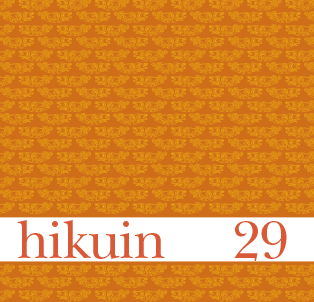Insulare Tierstile
Entwicklungsgeschichtliche Aspekte
Resumé
Insulære dyrestile
Udviklingshistoriske aspekter
Af Uta Roth
Hensigten med denne artikel er at præsentere nogle aspekter af udviklingen af dyreornamentet i irsk kunst. Selve begyndelsen af disse dyrestile kan spores tilbage til det 6. årh. (MS Cathach of St Columba) med den første anvendelse af små dyr i forbindelse med keltiske ornamentale detaljer af dekorativ karakter. Kristne symboler og andre mediterrane motiver kan findes i udsmykningen af de tidlige kristne manuskripter, på den anden side må man anerkende stærk indflydelse fra angelsaksisk kultur (germansk stil II). Her skal specielt omtales the Book of Durrow (kort efter 600 e.Kr.f.), hvor vi finder dyr (firbenere, båndfletsornamentik, »dyreprocessioner «), hvor kroppene er bygget op af brede bånd med konturlinjer, hoveder med øre og øje, forlængede kæber med udløbere, et (forlænget) forben og et bagben. Fødderne har tæer, der ligner fjerlignende duske, eller de er fremstillet vifteformede. Illustrationer i andre manuskripter (Durham A II 17; Köln, Dombibl. 213; Cambridge, CCC 197B; Trier, Domschatz Cod.61) viser videre udviklinger med hensyn til detaljer som udformning af ben med trædepuder og af kæber, eller forlængelse af ører (flige). Haler og flige bliver omdannet til et kompliceret entrelac-mønster. Et nyt mediterrant motiv med brug af fugle bliver indført (rovfugle med fødder, der ender i kløer). De er udformet på en temmelig naturalistisk måde. Højdepunktet inden for denne ornamentale gruppe ses i dyrene i the Book of Lindisfarne (ca. 698 e.Kr.f.), som repræsenterer en ny impuls af dyrestil med en naturalistisk behandling og adfærd af fugle og rovdyr, som er kombineret i varierende og komplekse grupper. Videre aspekter af udviklingen af insulær dyrestil skal betragtes på baggrund af historiske begivenheder som for eksempel det stærke samkvem mellem Irland og Northumbria, forårsaget af den irske mission og også af angelsaksere, der udførte studier i Irland (Beda). Disse kendsgerninger synes at vise, at det irske og northumbriske kunsthåndværk fremstår homogent fra begyndelsen af det 7. årh. Denne kulturelle enhed af kunsthåndværksprodukter kan bedst beskrives med betegnelsen »hiberno-saksisk«.
Referencer
Backhouse, J. 1981: The Lindisfarne Gospels. Oxford.
Bakka, E. 1963: Some English decorated metal objects found in Norwegian Viking Graves. Årbok for Universitetet i Bergen. Humanist. Ser. Nr. 1.
Bruce-Mitford, R.L.S. 1969: The art of the Codex Amiatinus. Jounal of the British Archaeological Association, 3rd ser., 32, 1-25.
Bruce-Mitford, R.L.S & D. Wilson 1979: Die Angelsachsen. In: Roth, H. (Hrsg.), Kunst der Völkerwanderungszeit. Propyläen Kunstgeschichte, Suppl.Bd IV. Frankfurt am Main, 206-222.
Cramp, R. 1984: Corpus of Anglo-Saxon stone sculpture. Bd 1 County Durham and Northumberland. Oxford.
Haseloff, G. 1979: Die Kunst der insularen Mission aud dem Kontinent. In: Roth, H. (Hrsg.), Kunst der Völkerwanderungszeit. Propyläen Kunstgeschichte, Suppl.Bd IV. Frankfurt am Main, 85-92.
Haseloff, G. 1987: Insular animal styles with special reference to Irish art in the early medieval period. In: Ryan 1987, Ireland and Insular art A.D. 500-1200. Proceedings of a conference at University College Cork, 31 October-3 November 1985. Dublin, 44-55.
Henderson, G. 1987: From Durrow to Kells. The Insular Gospel-books 650-800. London.
Henry, F. 1965: Irish art in the Early Christian Period (to A.D. 800). London.
Kitzinger, E. 1936: Anglo-Saxon vinescroll ornament. Antiquity 10, 61-71.
Marx, S. 1992: Untersuchungen zur Tierornamentik des Book of Lindisfarne. Magister-Arbeit München.
Nordenfalk, C. 1942: Eastern style-elements in the Lindisfarne Gospels. Acta Archaeologica 13, 157-168.
Nordenfalk, C.1947: Before the Book of Durrow. Acta Archaeologica 18, 141-174.
Nordenfalk, C.1976: Die spätantiken Zierbuchstaben. Stockholm.
O’Kelly, M.J. 1963: The excavation of two earthen ringforts at Gurryduff, Co. Cork. Proceedings of the Royal Irish Academy, Sec. C, 63, 17-125.
O’Meadhra, U. 1979: Early Christian, Viking and Romanesque art: motif-pieces from Ireland. Theses and papers in North-European archaeology 7. Stockholm.
Prinz, F. 1965: Frühes Mönchtum im Frankenreich. Kultur und Gesellschaft in Gallien, den Rheinlanden und Bayern am Beispiel der monastischen Entwicklung. 4. bis 8. Jahrhundert. München/Wien.
Roth, H. (Hrsg.) 1979: Kunst der Völkerwanderungszeit. Propyläen Kunstgeschichte, Suppl.Bd IV. Frankfurt am Main.
Roth, U. 1979: Studien zur Ornamentik frühchristlicher Handschriften des insularen Bereiches. Bericht der Römisch-germanischen Kommission 60, 5-225.
Roth, U. 1986: Zur Datierung des Book of Durrow. In: Gedenkschrift für Gero von Merhart: zum 100. Geburtstag. hrsg. von Vorgeschichtliches Seminar Marburg. (=Marburger Studien zur Vor- und Frühgeschichte, 7). Marburg/Lahn, 277-291.
Roth, U. 1987: Early insular manuscripts: ornament and archaeology, with special reference to the dating of the Book of Durrow. In: M. Ryan (Hrsg.), Ireland and Insular art A.D. 500-1200. Dublin, 23-29.
Ryan, M. (Hrsg.) 1983: The Derrynaflan Hoard I: A preliminary account. Dublin.
Ryan, M. 1987: The Donore Hoard: early medieval metalwork from Moynalty, near Kells, Ireland. Antiquity 61, 57-63.
Stein, W.A. 1980: The Lichfield Gospels. Unpublished dissertation. University of California.
Stevenson, R.B.K. 1974: The Hunterston Brooch and its significance. Medieval Archaeology 18, 16-42.
Stevenson, R.B.K. 1983: Further notes on the Hunterston and "Tara" brooches, Monymusk reliquary and Blackness bracelet. Proceedings of the Society of Antiquaries of Scotland 113, 469-77.
Verey, C.D., T.J. Brown & E. Coatsworth (Hrsg.) 1980: The Durham Gospels: together with fragments of a gospel book in uncial: Durham, Cathedral library, ms A. II. 17. Copenhagen.
Wamers, E. 1985: Insularer Metallschmuck in wikingerzeitlichen Gräbern Nordeuropas. Untersuchungen zur skandinavischen Westexpansion. Offa-Bücher, 56. Neumünster.
Webster, L. & J. Backhouse 1991: The making of England. Anglo-Saxon art and culture AD 600-900. London.
Whitfield, N. 1974: The finding of the Tara Brooch. Journal of the Royal Society of Antiquaries of Ireland 104, 120-142.
Whitfield, N. 1976: The original appearance of the Tara brooch. Journal of the Royal Society of Antiquaries of Ireland 106, 5-30.
Whitfield, N. 1993, The filigree of the Hunterston and "Tara" Brooches. In: R.M. Spearman & J. Higgit (Hrsg.), The age of migrating ideas: early Medieval art in Britain and Ireland. Edinburgh, 118-127.
Youngs, S. (Hrsg.) 1989: The work of angels. Masterpieces of Celtic metalwork, 6th-9th centuries A.D. London.
Downloads
Publiceret
Citation/Eksport
Nummer
Sektion
Licens
Forfatter og Forlag.





